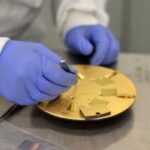What Mathematicians and Statisticians Do
Mathematicians and statisticians analyze data and apply mathematical and statistical techniques to help solve real-world problems in business, engineering, healthcare, or other fields.
Duties of Mathematicians and Statisticians
Mathematicians and statisticians typically do the following:
· Develop new mathematical rules, theories, and concepts in areas such as algebra and geometry
· Decide what data are needed to answer specific questions or problems
· Apply mathematical theories and techniques to solve practical problems in business, engineering, the sciences, and other fields
· Design surveys, experiments, or opinion polls to collect data
· Develop mathematical or statistical models to analyze data
· Interpret data and report conclusions drawn from their analyses
· Use data analysis to support and improve business decisions
Mathematicians and statisticians apply theories and techniques, such as mathematical or statistical modeling, to solve practical problems. Typically, they work with individuals in other occupations to solve these problems. For example, they may work withchemists, materials scientists, and chemical engineers to analyze the effectiveness of new drugs. Others may work with industrial designers to study the aerodynamic characteristics of new automobiles.
To work on these problems, mathematicians and statisticians must first collect data. Statisticians design surveys, questionnaires, experiments, and opinion polls to collect the data they need. Surveys may be mailed, conducted over the phone, collected online, or gathered through some other means.
Some surveys, such as the U.S. census, include data from nearly everyone. For most surveys and opinion polls, however, statisticians use a sampling method to collect data from some people in a particular group. Statisticians determine the type and size of the sample to be surveyed or polled.
After the data are collected, mathematicians and statisticians use specialized statistical software to analyze data. In their analyses, mathematicians and statisticians identify trends and relationships within the data. They also conduct tests to determine the data’s validity and to account for high survey nonresponse rates or sampling error. Some may help create new software to analyze data more accurately and efficiently.
Mathematicians and statisticians present the findings from their analyses and discuss the data’s limitations in order to prevent inaccurate conclusions from being drawn. They may present written reports, tables, charts, and graphs to other team members and to clients.
Mathematicians and statisticians work in many fields, such as education, marketing, psychology, sports, or any other field that requires the collection and analysis of data. In particular, government, healthcare, and research and development companies employ many statisticians.
Government. Mathematicians and statisticians working in government develop and analyze surveys that collect a variety of data, including unemployment rates, wages, and other estimates pertaining to jobs and workers. Others help to figure out the average level of pesticides in drinking water, the number of endangered species living in a particular area, or the number of people who have a certain disease.
Healthcare. Statisticians known as biostatisticians or biometricians work in pharmaceutical companies, public health agencies, or hospitals. They may design studies to test whether drugs successfully treat diseases or medical conditions. They may also help identify the sources of outbreaks of illnesses in humans and animals.
Research and development. Mathematicians and statisticians design experiments for product testing and development. For instance, they may help design experiments to see how car engines perform when exposed to extreme weather conditions. Some may analyze consumer data to help develop marketing strategies and prices for consumer goods.
Colleges and universities. Mathematicians and statisticians working in a postsecondary education institution may study theoretical or abstract concepts in mathematics or statistics. They identify, research, and resolve unexplained issues in mathematics and are concerned primarily with exploring new mathematical or statistical theories to increase knowledge and understanding about the field.
However, the mathematician occupation is a relatively small one, and many people with a degree in mathematics or who develop mathematical theories and models may not be formally known as mathematicians. Instead, they work in related fields and professions. In the computer systems design and related services industries, for example, they may be known as computer programmers or systems analysts. In finance, they may be known as quantitative analysts. Other industries may refer to them as data scientists or data analysts.
Computer and information research scientists, physicists and astronomers,economists, actuaries, operations research analysts, engineers, and many other occupations also use mathematics extensively.
Many people with a Ph.D. in mathematics, particularly theoretical mathematics, work as postsecondary teachers in education institutions. They usually have a mix of teaching and research responsibilities. Some may conduct individual research or collaborate with other professors or mathematicians. Collaborators may work together at the same institution or from different locations.


